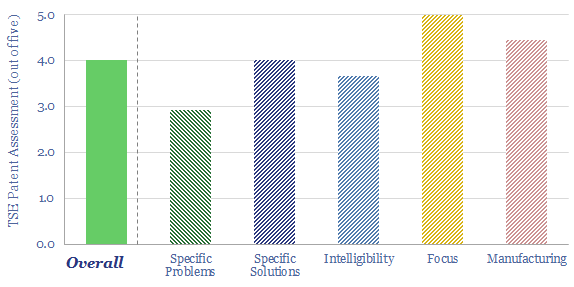This data-file reviews Verdox DAC technology, optimizing polyanthraquinones and polynaphthoquinones, then depositing them on porous carbon nanotube scaffolds, using similar methods to lithium ion batteries. These quinones are shown to selectively adsorb CO2 when a voltage is applied, then desorb them when a reverse voltage is applied, unlocking 70% lower energy penalties than incumbent L-DAC and S-DAC?
Verdox is a spin-out from MIT, founded in 2019, which raised $80M in February-2022, to develop an electro-chemical DAC system. In February-2022, Aluminium-producer, Hydro, also invested a further $20M in Verdox (as the off-gas from aluminium smelters has 1% CO2).
Electrochemical DAC allows gas to flow through an electrochemical cell with low resistance, adsorbs CO2 by applying a voltage, then later releases the CO2 by applying a reverse voltage. Our recent DAC review sees potential in this approach, including via a rising number of next-generation DAC companies.
The Verdox patents that we reviewed used quinones, mostly naphthoquinones, anthraquinones (images below) and polymers of these quinones such as polyanthraquinones (cited in press articles) as electrochemically active sorbents.
When a voltage is applied, quinones can reduce (gain one electron per C=O group). The reduced naphthoquinones can selectively react with CO2.
Different R-groups in positions (*1 through *8 of the images below) and different additives on the carbon scaffold alter the electron donating properties of the naphthoquinones to C=O groups, and in turn, alter the tendency to adsorb and desorb CO2.


Carbon scaffold. In a functioning electrochemical DAC system, polyanthraquinones and polynaphthoquinones will be deposited on scaffolds of porous carbon nanotubes. The patents contain excellent details. Interestingly, the manufacturing process is quite similar to today’s battery cathode manufacturing. And some of the patents specifically name-check Huntsman’s MIRALON nano-carbon as an input.
Please download the data-file for our conclusions into Verdox DAC technology, how much we can de-risk from the patents, and other specific details (performance, cost, other cell materials, likely manufacturing details).
